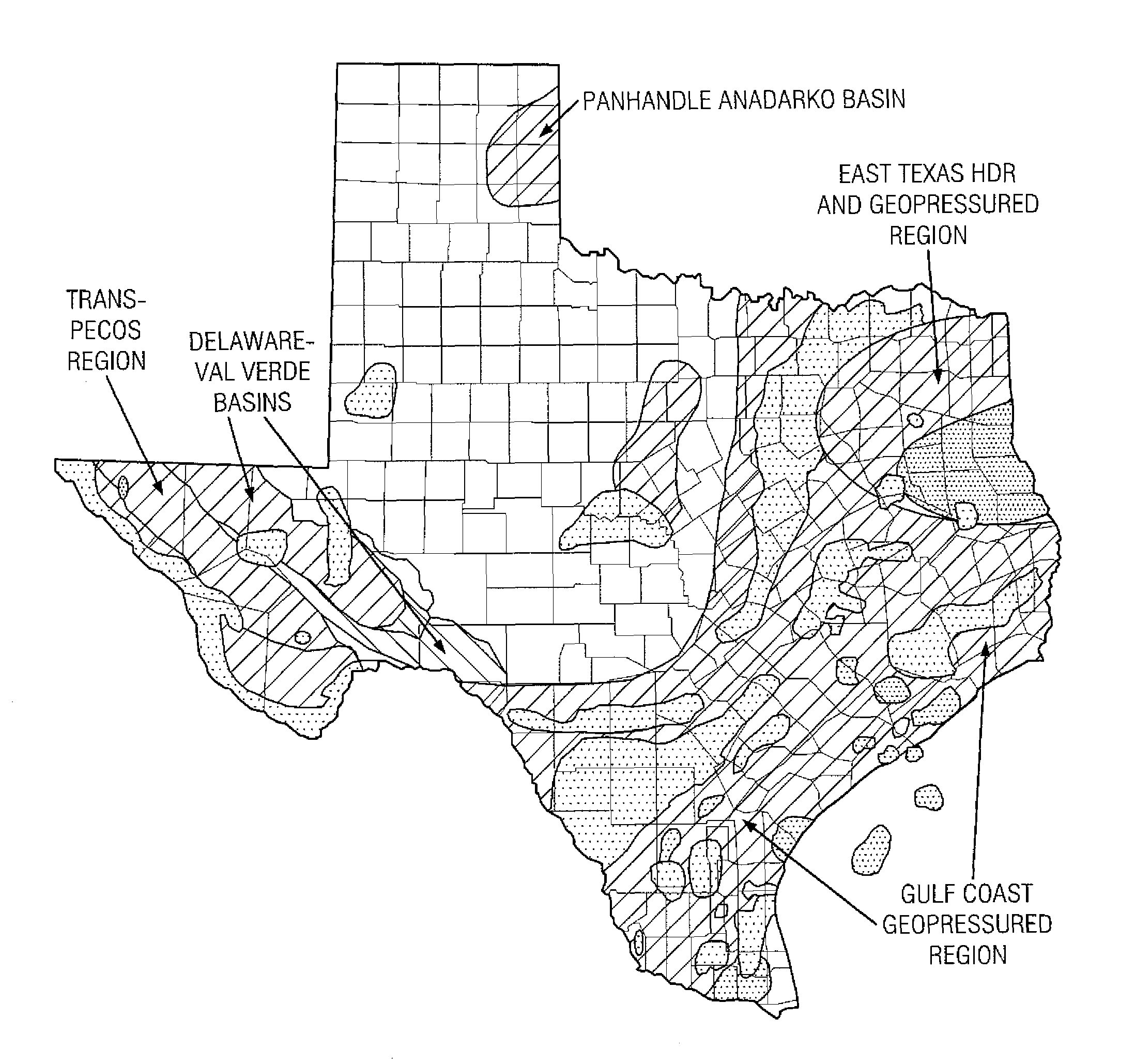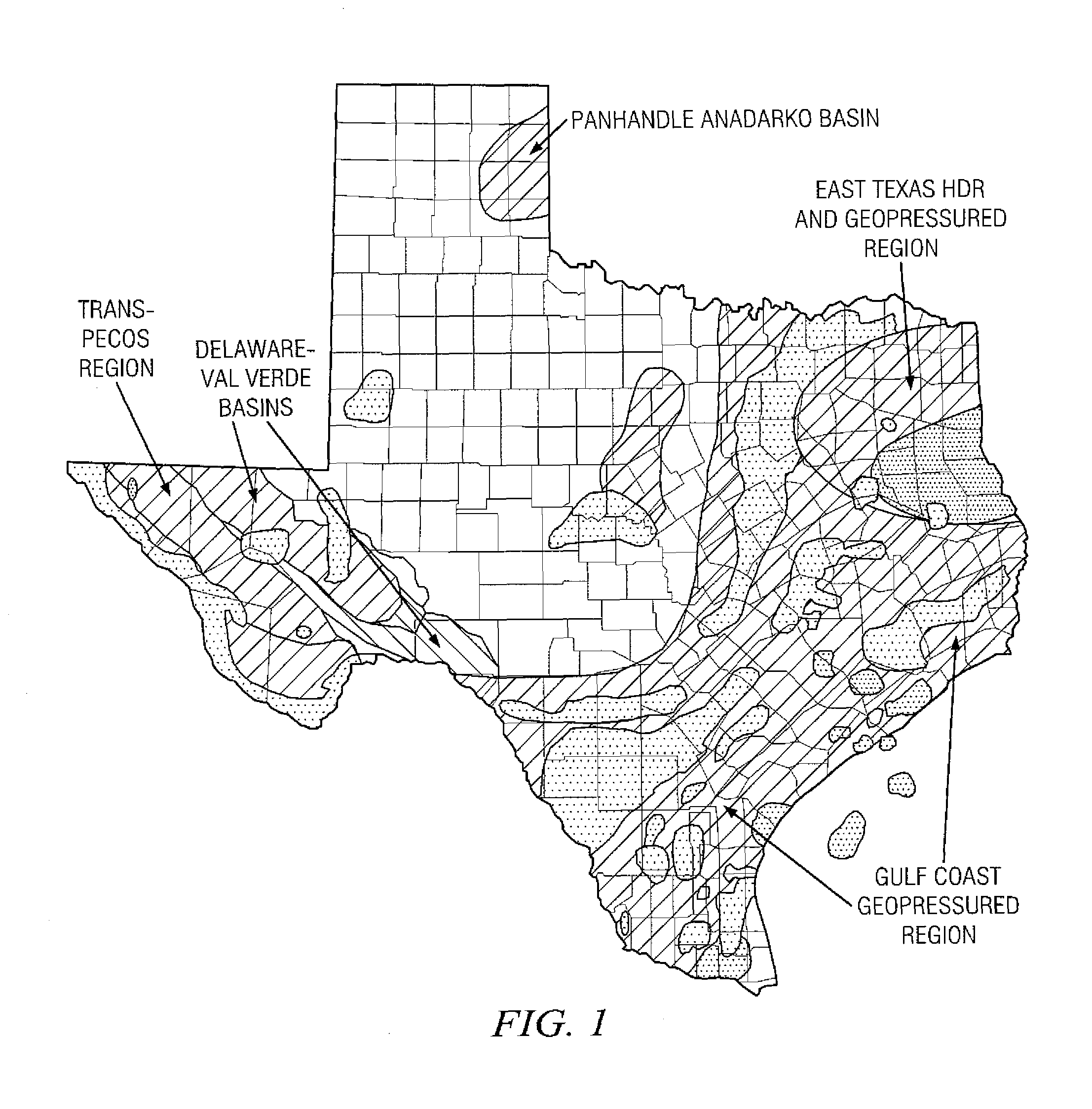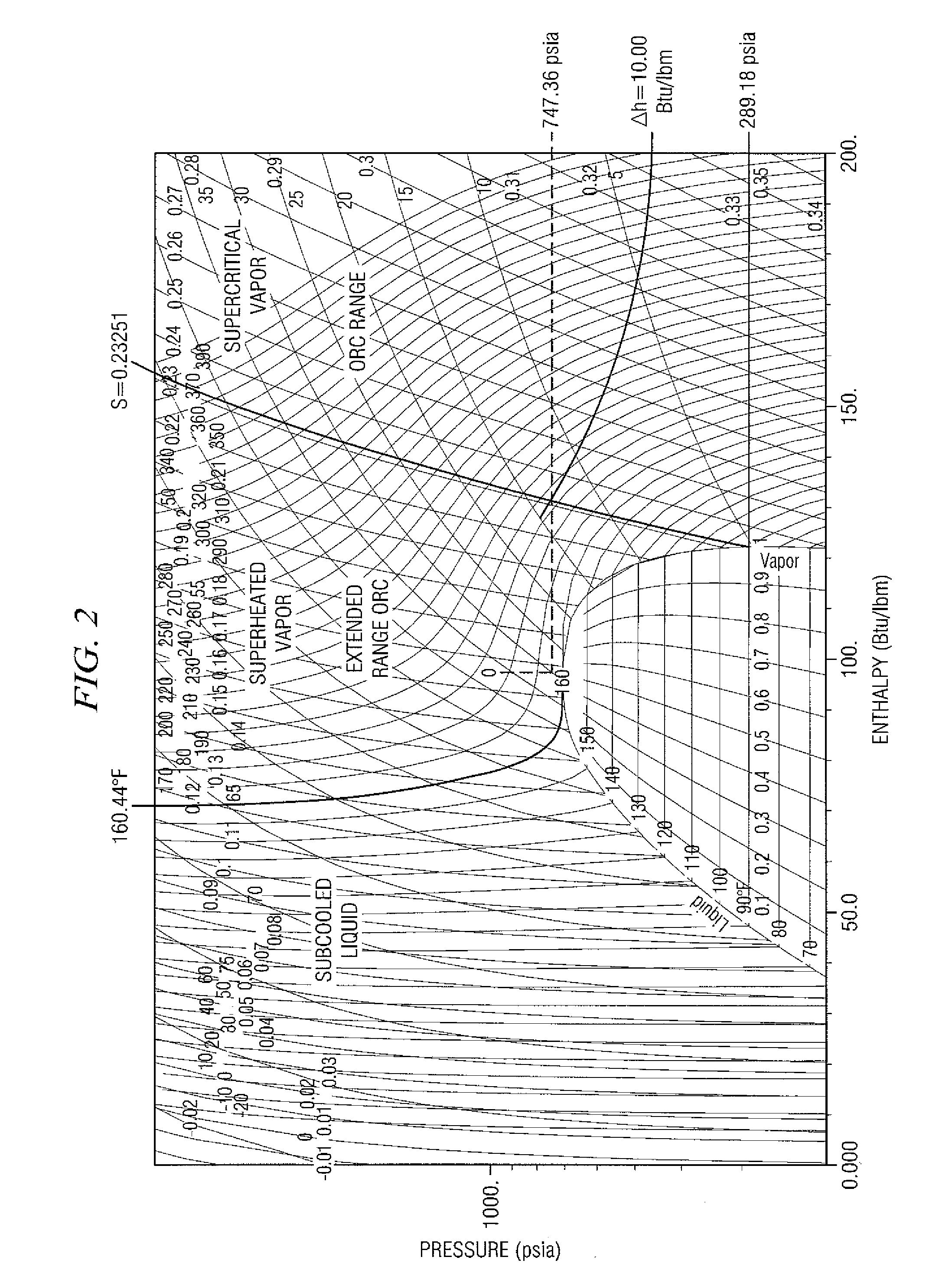Thermodynamic amplifier cycle system and method
a technology of amplifier cycle and power cycle, which is applied in the direction of steam engine plants, machines/engines, mechanical equipment, etc., can solve the problems of inability to use current technology or systems, limited geothermal energy extraction, and vast depth of earth beneath texas, so as to increase efficiency, amplification of thermodynamic properties, and the effect of expanding the usable rang
- Summary
- Abstract
- Description
- Claims
- Application Information
AI Technical Summary
Benefits of technology
Problems solved by technology
Method used
Image
Examples
Embodiment Construction
[0033]A closed Organic Rankine Cycle (“ORC”) is a system for delivering extractable power from a heat source where the liquid is compressed by the pump and delivered to the geothermal evaporator heat-exchanger, which is also referred to herein as a heat exchanger. The liquid is a working fluid. The evaporator heat-exchanger transfers external heat to the ORC working fluid, evaporates the fluid and delivers high temperature and pressure (supercritical energy) vapor to the power producing turbine for energy extraction. The use of the term vapor power cycle, thus is broadly applied as the transport of thermal energy from one enthalpy / entropy state to another. Thus, the utilization of vapor power cycles is not restricted to power generation (e.g. electrical or mechanical energy), but also for the intrinsic movement of thermal energy in virtually any thermodynamic cycle including means to convert such thermal energy for generation of heating or cooling extraction.
[0034]The present invent...
PUM
 Login to View More
Login to View More Abstract
Description
Claims
Application Information
 Login to View More
Login to View More - R&D
- Intellectual Property
- Life Sciences
- Materials
- Tech Scout
- Unparalleled Data Quality
- Higher Quality Content
- 60% Fewer Hallucinations
Browse by: Latest US Patents, China's latest patents, Technical Efficacy Thesaurus, Application Domain, Technology Topic, Popular Technical Reports.
© 2025 PatSnap. All rights reserved.Legal|Privacy policy|Modern Slavery Act Transparency Statement|Sitemap|About US| Contact US: help@patsnap.com



